Markus Vieth
Traffic4cast at NeurIPS 2021 -- Temporal and Spatial Few-Shot Transfer Learning in Gridded Geo-Spatial Processes
Apr 01, 2022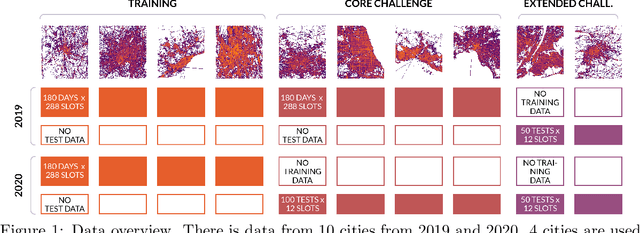
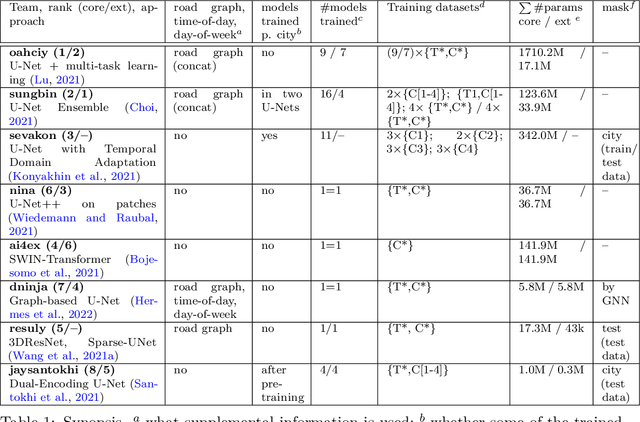


Abstract:The IARAI Traffic4cast competitions at NeurIPS 2019 and 2020 showed that neural networks can successfully predict future traffic conditions 1 hour into the future on simply aggregated GPS probe data in time and space bins. We thus reinterpreted the challenge of forecasting traffic conditions as a movie completion task. U-Nets proved to be the winning architecture, demonstrating an ability to extract relevant features in this complex real-world geo-spatial process. Building on the previous competitions, Traffic4cast 2021 now focuses on the question of model robustness and generalizability across time and space. Moving from one city to an entirely different city, or moving from pre-COVID times to times after COVID hit the world thus introduces a clear domain shift. We thus, for the first time, release data featuring such domain shifts. The competition now covers ten cities over 2 years, providing data compiled from over 10^12 GPS probe data. Winning solutions captured traffic dynamics sufficiently well to even cope with these complex domain shifts. Surprisingly, this seemed to require only the previous 1h traffic dynamic history and static road graph as input.
A Graph-based U-Net Model for Predicting Traffic in unseen Cities
Mar 01, 2022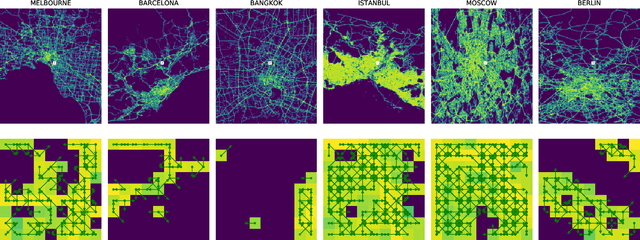
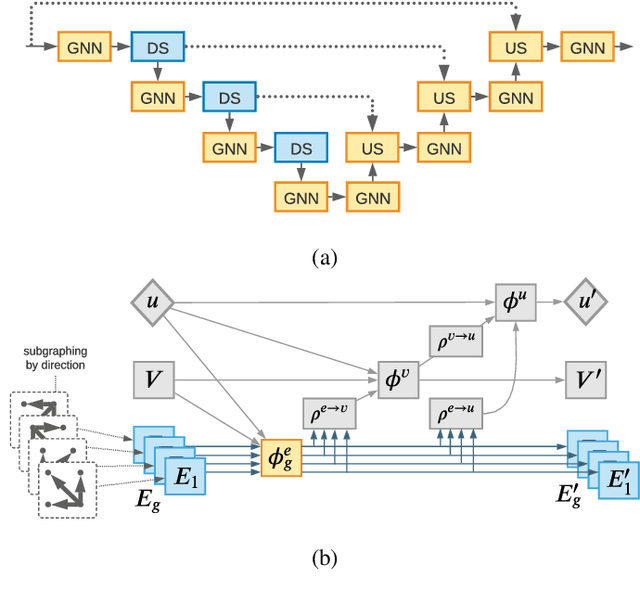
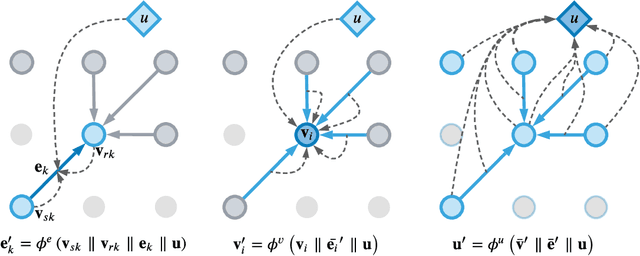

Abstract:Accurate traffic prediction is a key ingredient to enable traffic management like rerouting cars to reduce road congestion or regulating traffic via dynamic speed limits to maintain a steady flow. A way to represent traffic data is in the form of temporally changing heatmaps visualizing attributes of traffic, such as speed and volume. In recent works, U-Net models have shown SOTA performance on traffic forecasting from heatmaps. We propose to combine the U-Net architecture with graph layers which improves spatial generalization to unseen road networks compared to a Vanilla U-Net. In particular, we specialize existing graph operations to be sensitive to geographical topology and generalize pooling and upsampling operations to be applicable to graphs.
 Add to Chrome
Add to Chrome Add to Firefox
Add to Firefox Add to Edge
Add to Edge